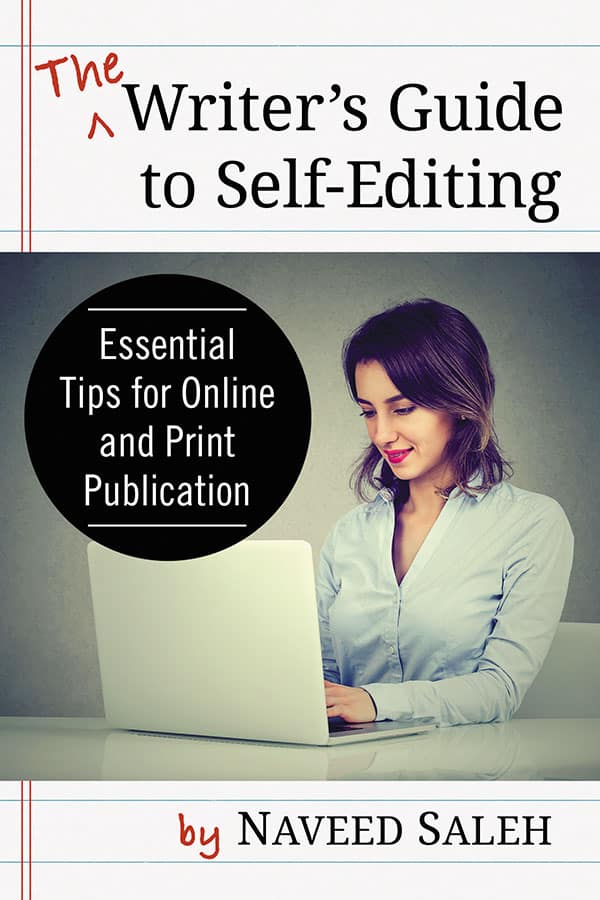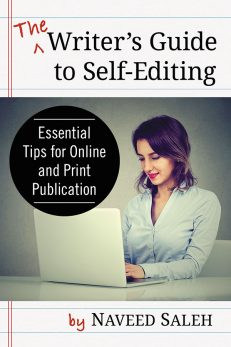The Writer’s Guide to Self-Editing
Essential Tips for Online and Print Publication
Original price was: $29.95.$14.99Current price is: $14.99.
In stock
About the Book
Over the years, technological advances have given publishers the ability to produce more books and online publications with greater speed. This new efficiency, however, has increased editors’ workloads, limiting the amount of detailed editorial feedback that they can provide authors. In turn, writers must become self-editors, ensuring that their text is nearly perfect on submission.
This book serves as a guide to self-editing nonfiction print and online publications, including articles for general and academic audiences. It is both prescriptive and descriptive, drawing from stylebooks, dictionaries, research, and more to provide a full picture of both style and grammar. Also provided are techniques that boost search-engine optimization and engagement of Internet audiences.
About the Author(s)
Bibliographic Details
Naveed Saleh
Format: softcover (6 x 9)
Pages: 280
Bibliographic Info: appendices, bibliography, index
Copyright Date: 2019
pISBN: 978-1-4766-7159-8
eISBN: 978-1-4766-3404-3
Imprint: McFarland
Table of Contents
Preface 1
Introduction 3
Part I: Style
1. Adverb Placement 5
2. Articles 9
3. Comparison-Formations 14
4. Personal Pronouns 18
5. Plurals 20
6. Prepositions 25
7. Present and Past Participles 26
8. Subject-Verb Agreement 27
9. Tenses 29
10. Who and Whom 32
Part II: Diction
11. Attributive Nouns 35
12. Clear Antecedents 38
13. Comparisons 39
14. Core Modals 41
15. Figurative Language 48
16. Idioms 54
17. Jargon 55
18. Left-Branching Sentences 58
19. Misplaced Modifiers 59
20. Negations 61
21. Nominalizations 63
22. Noun Choice 66
23. Noun Strings 67
24. Parallelism 70
25. Passive Voice 72
26. Powerhouse Verbs 76
27. Preposition Stranding 78
28. Progressive Tense: A Linguistics Perspective 79
29. Relative Pronouns 82
30. Subjunctive Mood 86
31. Transition Words and Phrases 94
32. Using “as well as” 96
33. Verbals 98
34. Word Usage 99
35. Wordiness 106
Part III: Mechanics
36. Abbreviations 111
37. Capitalization 114
38. Contractions 116
39. Interjections 118
40. Italics 121
41. Numbers 124
42. Orthography 125
Part IV: Punctuation
43. Colons 129
44. Commas 130
45. Ellipsis Points 137
46. Exclamation Points 138
47. Interrupters 142
48. Possessive Forms 145
49. Punctuating Appositives 152
50. Question Marks 153
51. Quotations 155
52. Semicolons 157
53. Slashes 159
Part V: Organization
54. Headers 163
55. Lists 168
56. Paragraphs 171
57. Sentence Length 175
58. Tables 178
59. Titles and Headlines 179
Part VI: Online Publication
60. Header Tags: Titles, Subtitles, and Subheads 185
61. Keywords 187
62. Links 190
63. Meta Descriptions 193
64. Photos 194
65. Taxonomy 200
Part VII: Global Considerations
66. Angles and Hooks 203
67. Audience 205
68. Hedging 210
69. Humanism and Unbiased Language 213
70. Identification 221
71. Narrative: Beginnings, Middles, and Ends 223
72. Paraphrasing 228
73. Prescriptive vs. Descriptive 229
74. Sources 232
75. Tone 236
Appendices:
Appendix I: Understanding Editing 243
Appendix II: Grammar vs. Style 248
Appendix III: How Does Google Search Work? 253
Appendix IV: Updating Content 254
Bibliography 258
Index 263
Book Reviews & Awards
- “Both prescriptive and descriptive, drawing from stylebooks, dictionaries, research, and more to provide a full picture of both style and grammar…thoroughly ‘user friendly’ in organization and presentation…recommended”—Midwest Book Review.





